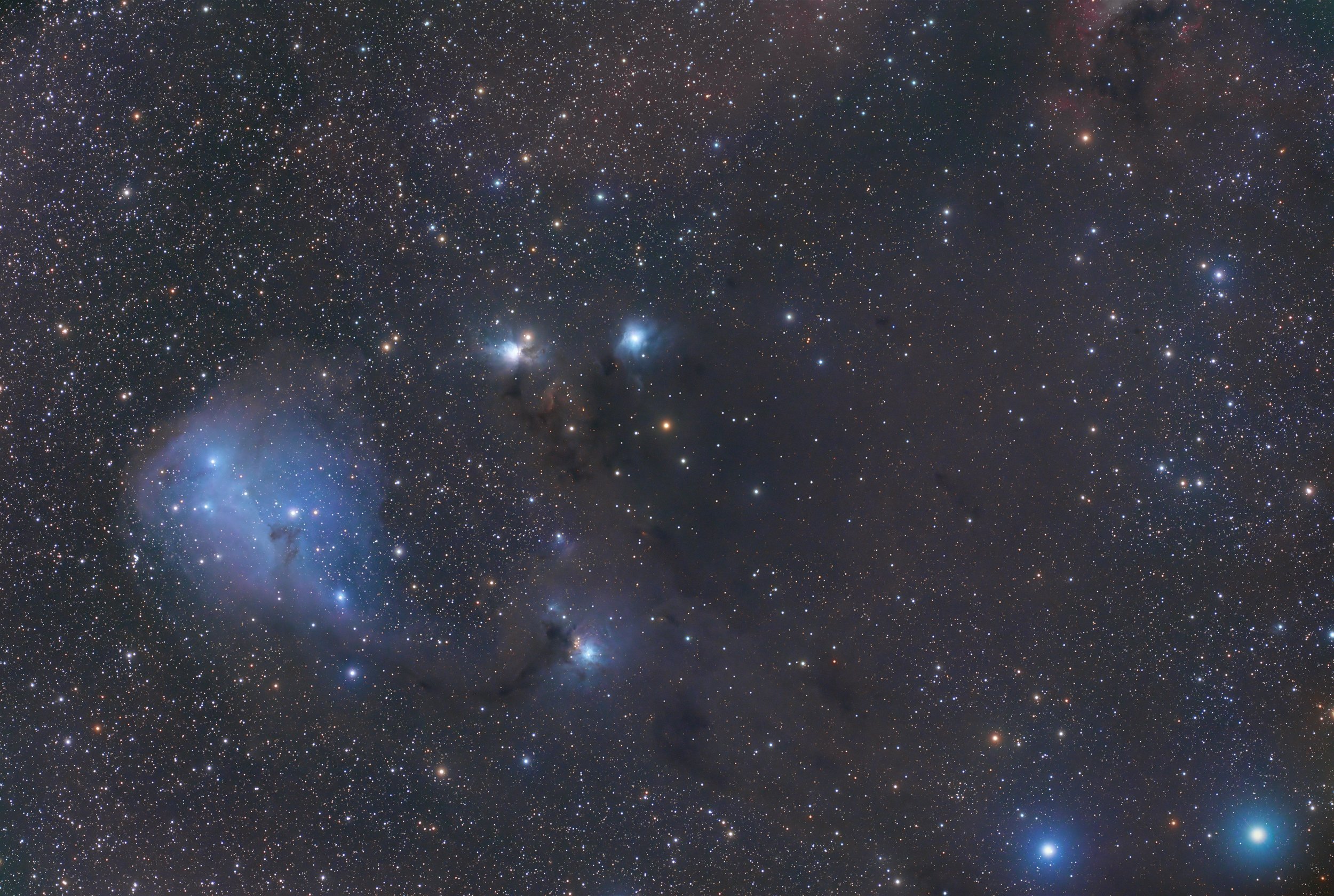
AAPOD2 Image Archives
Sort 2025 By Month: January | February | March | April | May | June | July | August | September | October | November | December
IC434 - Dusty Region around the Horse Head Nebula
This image highlights the Horsehead Nebula (Barnard 33) and its surrounding dusty region, set against the glowing backdrop of IC 434 in the constellation Orion.
The Horsehead Nebula, one of the most iconic dark nebulae in the night sky, is silhouetted against the bright hydrogen-alpha emissions of IC 434. Its distinctive shape is sculpted by powerful stellar winds and intense radiation from nearby stars, including Alnitak, the easternmost star of Orion’s Belt, which lies just outside the frame.
This dusty region is rich in interstellar material, with dark lanes of cold molecular gas and dust weaving through the glowing emission nebula. The complex interplay of light and shadow creates a dramatic and textured view of this stellar nursery, where new stars are forming deep within the clouds.
The region lies approximately 1,500 light-years away and spans a vast area of the Orion Molecular Cloud Complex. This detailed portrait captures the beauty of cosmic creation, offering a glimpse into the processes shaping our galaxy.
Horsehead and a Flame
The Horsehead is one of the most famous nebulae on the sky. The horse-head feature is dark because it is really an opaque dust cloud that lies in front of the bright emission nebula. Like clouds in Earth's atmosphere, this cosmic cloud has assumed a recognizable shape by chance. After many thousands of years, the internal motions of the cloud will surely alter its appearance. The emission nebula's color is caused by electrons recombining with protons to form hydrogen atoms. On the image left is the Flame Nebula that also contains filaments of dark dust. Just to the lower left of the Horsehead nebula is a blueish reflection nebulae that preferentially reflects the blue light from nearby stars.
Tech card:
Imaging telescope: Explore Scientific 127mm ED TRIPLET APO.
Imaging camera: ZWO ASI294MM-Pro.
Mounts: iOptron CEM60.
Guiding camera: ZWO ASI290MM mini.
Focal reducer: Explore Scientific 0.7 Reducer/Flattener.
Accessory: ZWO OAG · ZWO ASIAIR Pro · ZWO 8x 1.25" Filter Wheel (EFW).
Frames:
Chroma 3nm Ha: 12x600" (2h) (gain: 200.00) -20C bin 1x1.
Chroma 3nm OIII: 15x600" (2h 30') (gain: 200.00) -20C bin 1x1.
Chroma 3nm SII: 8x600" (1h 20') (gain: 200.00) -20C bin 1x1.
Total integration: 5h 50'
Darks: ~50.
Flats: ~30.
Flat darks: ~30.
Avg. Moon age: 19.61 days.
Avg. Moon phase: 75.53%
Bortle Dark-Sky Scale: 4.00.
RA center: 5h 41' 15"
DEC center: -2° 16' 1"
Pixel scale: 0.706 arcsec/pixel.
Orientation: -93.427 degrees.
Field radius: 0.983 degrees.
Imaging dates: Jan. 3 and 4, 2021.
Imaging location: Abu Dhabi desert, UAE.
Copyright: Wissam Ayoub




